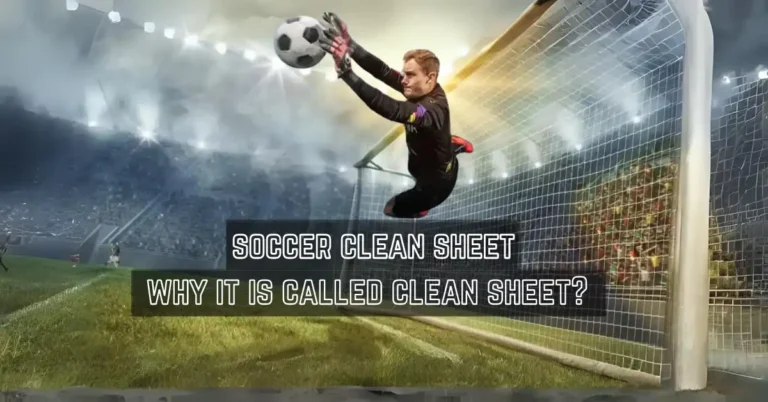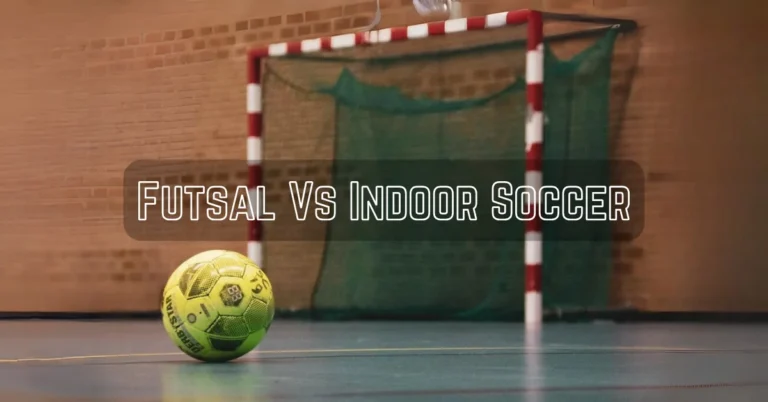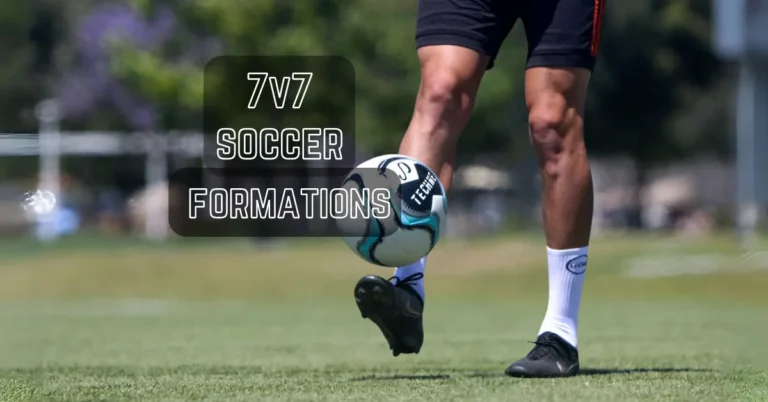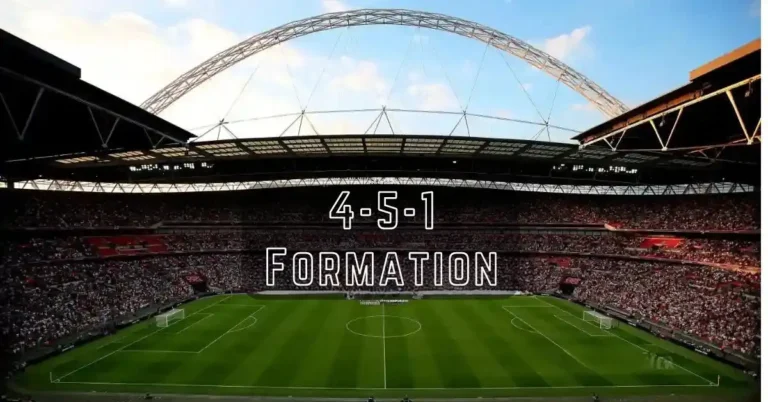4-1-4-1 Formation With Strengths And Weaknesses
The 4-1-4-1 formation has gained popularity over the years due to its stable and great strategy. Defense stability, control in midfield, and the ability to exploit open spaces are some of the advantages of this formation.
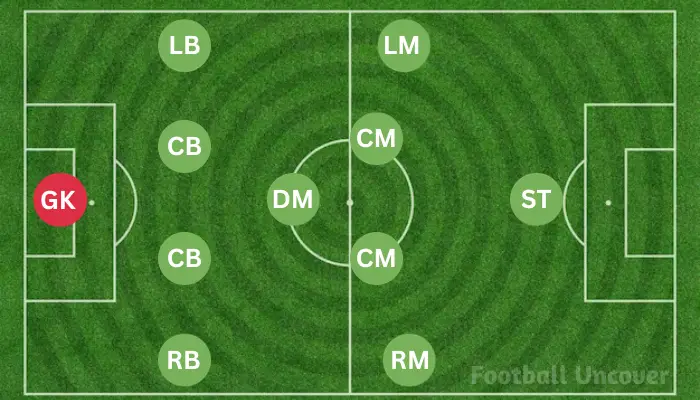
Helenio Herrera introduced the concept of the “libero” and a more structured midfield, which laid the foundation for formations like 4-1-4-1. Brazil’s national team in the 1962 FIFA World Cup employed a formation that had characteristics of the 4-1-4-1.
The evolution of tactics and formations in football is an ongoing process, and various coaches and teams have contributed to refining and adapting the 4-1-4-1 formation to suit their specific needs and playing styles.
Positions of players in 4-1-4-1 formation
The 4-1-4-1 formation is a variant of the 4-4-2 formation, often referred to as “midfield diamond.” A 4-1-4-1 formation consists of four defenders, a defensive midfielder, four midfielders arranged in a diamond shape, and one striker.

Defenders (4)
The backline consists of two central defenders and two outside backs. This provides a solid defensive foundation, making it difficult for the opposition to penetrate through the middle or wings.
Defensive Midfielder (1)
The anchorman in this formation, the defensive midfielder is responsible for shielding the defense, breaking up opposition plays, and distributing the ball to initiate attacks.
Midfielders (4)
The midfield is the heart of this formation. It includes a central attacking midfielder, two central midfielders, and a wide midfielder. The central attacking midfielder is the creative hub, while the central midfielders provide support both defensively and offensively. The wide midfielder adds width to the formation.
Striker (1)
The lone striker up front is the target for crosses, through balls, and counter-attacks. This player’s role is crucial in converting chances into goals.
See Also Best Formations For 11v11 Soccer
Optimizing The 4-1-4-1 formation

With a solid four-man defensive line, a dedicated defensive midfielder acts as a shield in front of the defense, thwarting opposition attacks and initiating counter-pressing.
The central midfield duo works in tandem, with one player focusing on breaking up opposition plays and distributing the ball, while the other joins the attack, offering an additional passing option and contributing to offensive transitions.
The wide midfielders provide width in attack and track back to support defensively, ensuring the team maintains a compact shape.
The lone striker, positioned centrally, serves as the focal point for goal-scoring opportunities and can drop deep to link up play when needed.
strengths of the 4-1-4-1 Formation

Defensive Stability
The formation provides a solid defensive structure with four defenders at the back and a defensive midfielder in front of the defense. This can make it difficult for opponents to break through the defensive lines.
Midfield Control
With four midfielders in a flat line, the team can control the central areas of the pitch. This can lead to dominance in possession and help in dictating the tempo of the game.
Counterattacking Potential
The 4-1-4-1 formation is well-suited for quick counterattacks. The defensive midfielder can win the ball and distribute it efficiently to the more advanced midfielders and a lone striker, exploiting spaces left by the opposing team.
Flexibility
The formation allows for flexibility in transitioning between defense and attack. The team can quickly switch from a solid defensive shape to a dynamic attacking setup.
See Also 5-4-1 Formation
Weaknesses of the 4-1-4-1 Formation

Limited Offensive Support
The lone striker may find it challenging to receive adequate support from the midfielders, especially if they are more defensively oriented. This can lead to isolation and a lack of goal-scoring opportunities.
Vulnerability on the Wings
The flat midfield line can leave the flanks exposed, making the team susceptible to attacks from wide areas. Skilled wingers or full-backs from the opposing team may exploit these spaces.
Pressure on the Defensive Midfielder
The defensive midfielder in front of the defense bears a significant defensive responsibility. If they are outnumbered or overwhelmed, it can create gaps in the defensive structure.
Risk of Being Overrun in Midfield
Against teams with a strong midfield presence or those playing with multiple central midfielders, the 4-1-4-1 may struggle to maintain control in the middle of the pitch.
See Also 3-5-2 Formation
Teams That Used 4-1-4-1 Formation Successfully

Germany National Team (2014 World Cup)
Germany, under coach Joachim Low, used a modified 4-1-4-1 formation during the 2014 FIFA World Cup in Brazil. The lone striker was often Miroslav Klose or Thomas Muller, with Mesut Ozil and Toni Kroos playing in advanced midfield roles.
Manchester City (Pep Guardiola)
Pep Guardiola, has utilized the 4-1-4-1 formation at Manchester City. Fernandinho typically played as the lone defensive midfielder, providing a shield for the defense
Paris Saint-Germain (Unai Emery)
During Unai Emery’s tenure at Paris Saint-Germain. Thiago Motta acted as the holding midfielder, while attacking talents like Marco Verratti and Adrien Rabiot played in advanced midfield roles. This system contributed to PSG’s domestic success.
Tottenham Hotspur (Mauricio Pochettino)
Mauricio Pochettino, during his time at Tottenham Hotspur, occasionally employed a 4-1-4-1 formation. The lone holding midfielder provided a defensive anchor, while the advanced midfielders supported the lone striker
Atletico Madrid (Diego Simeone)
Atletico Madrid, under Diego Simeone, has at times used a variant of the 4-1-4-1 formation. This formation was particularly effective during Atletico’s run to the UEFA Champions League final in 2015-2016.
See also: 4-3-3 Soccer Formation
FAQs
4-2-3-1 is a good formation but the effectiveness of this formation depends on team dynamics, player strengths, and tactical preferences.
The 4-4-2 formation is praised for its balance between defensive solidity and attacking options, providing a straightforward structure with two banks of four players and two strikers.
There is no universally “best” football formation, as effectiveness depends on team personnel, playing style, and tactical considerations.
The 4-1-2-1-2 formation is a diamond-shaped setup with four defenders, one defensive midfielder, two central midfielders, and an attacking midfielder supporting two strikers.
The 4-2-3-1 formation may be susceptible to counterattacks and leaves space between the defensive and midfield lines, potentially exposing the team to fast transitions.
conclusion
The 4-1-4-1 formation is a tactical choice that can bring success to teams that utilize it effectively. The key to success with this formation lies in the manager’s ability to make it work to the team’s strengths and weaknesses. By understanding when and how to employ the 4-1-4-1 formation, a team can unlock its potential and gain a competitive edge on the football field.



